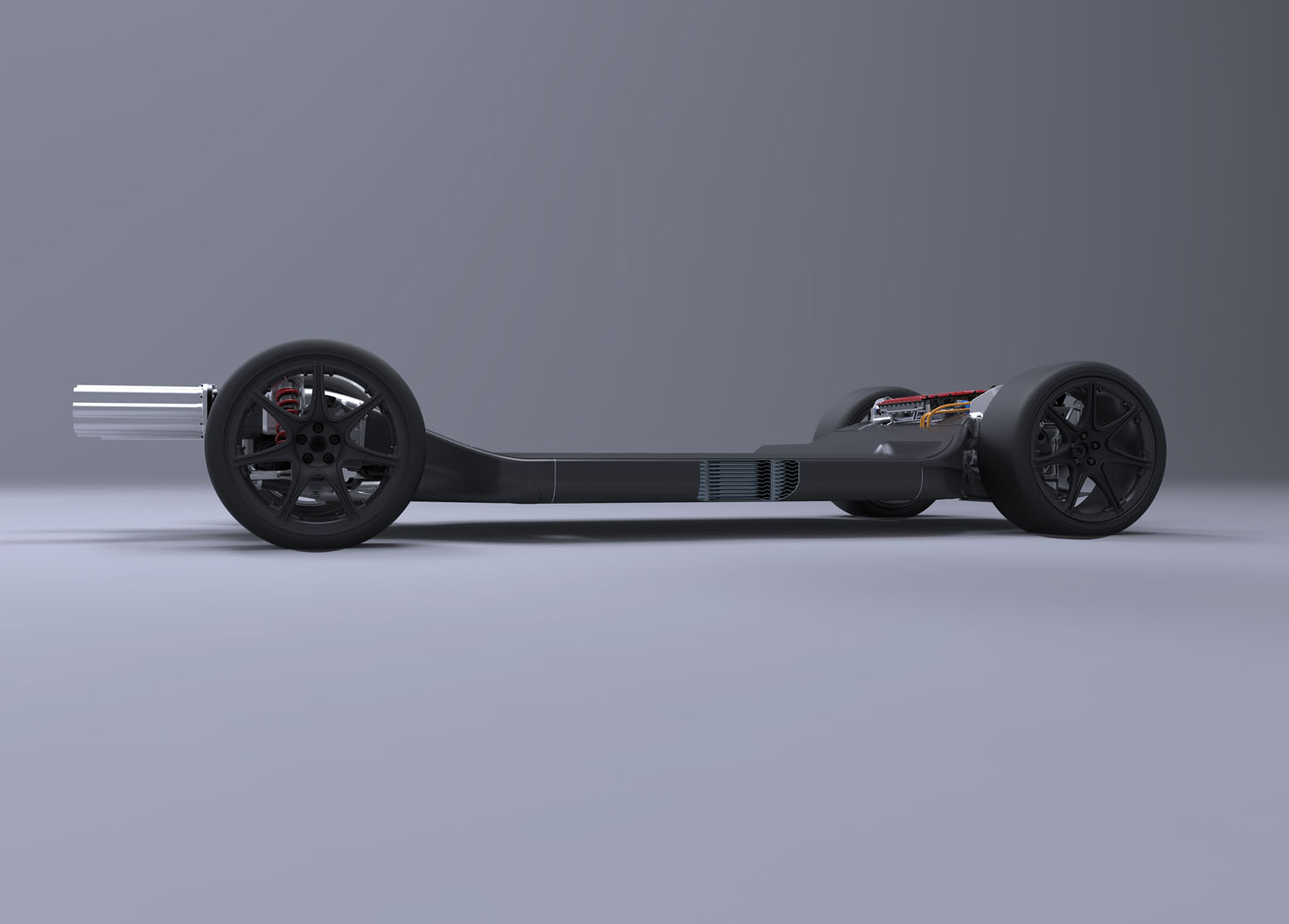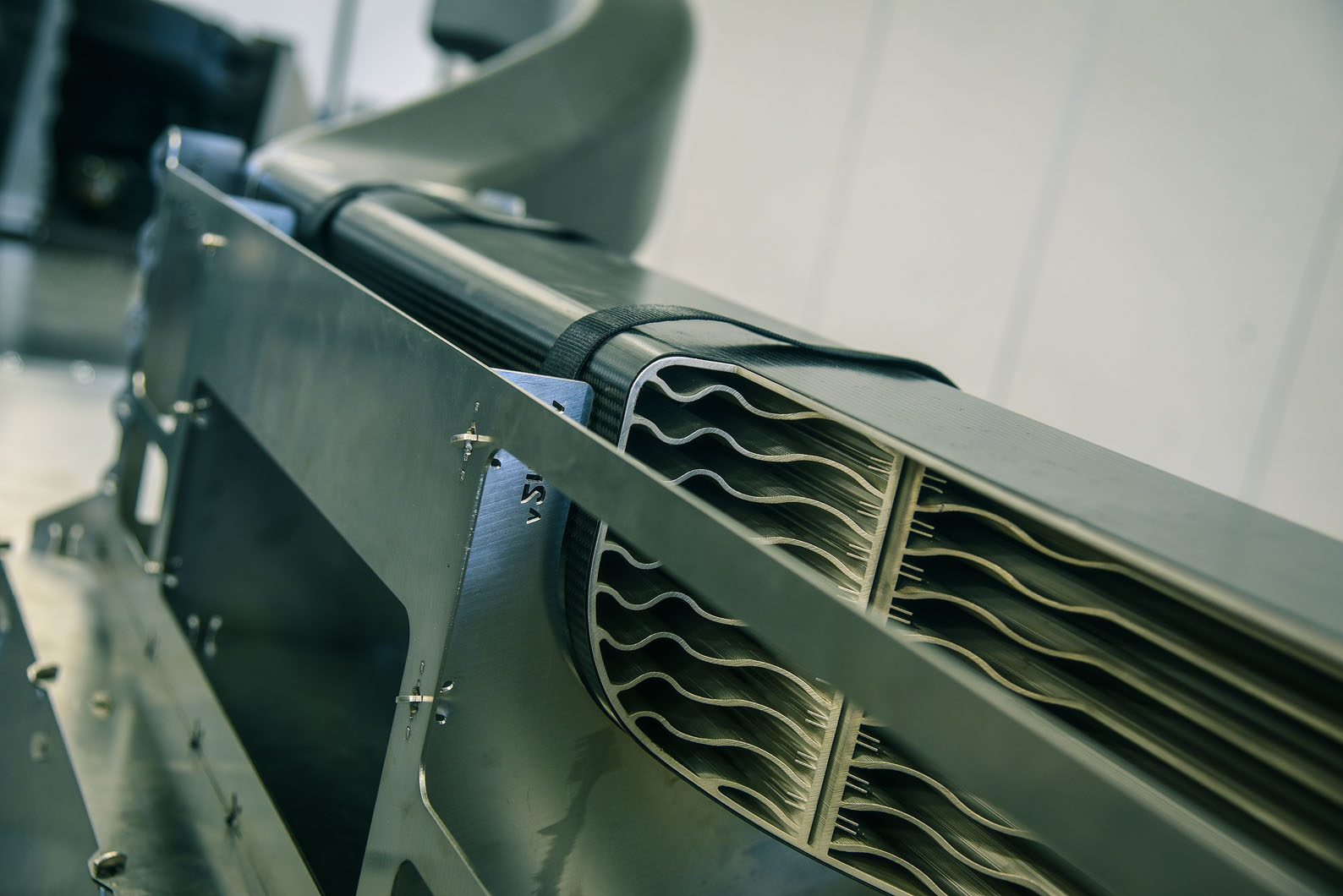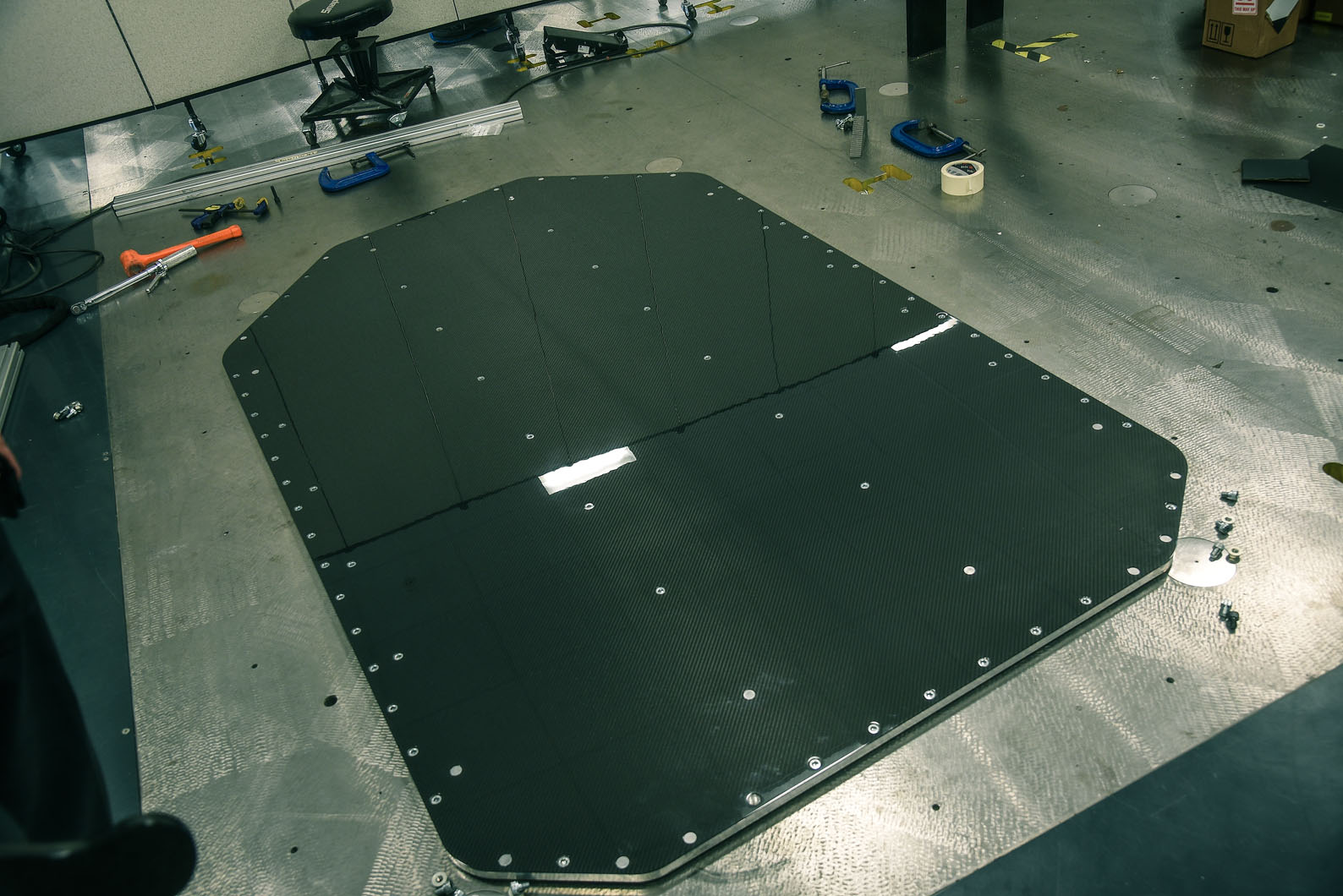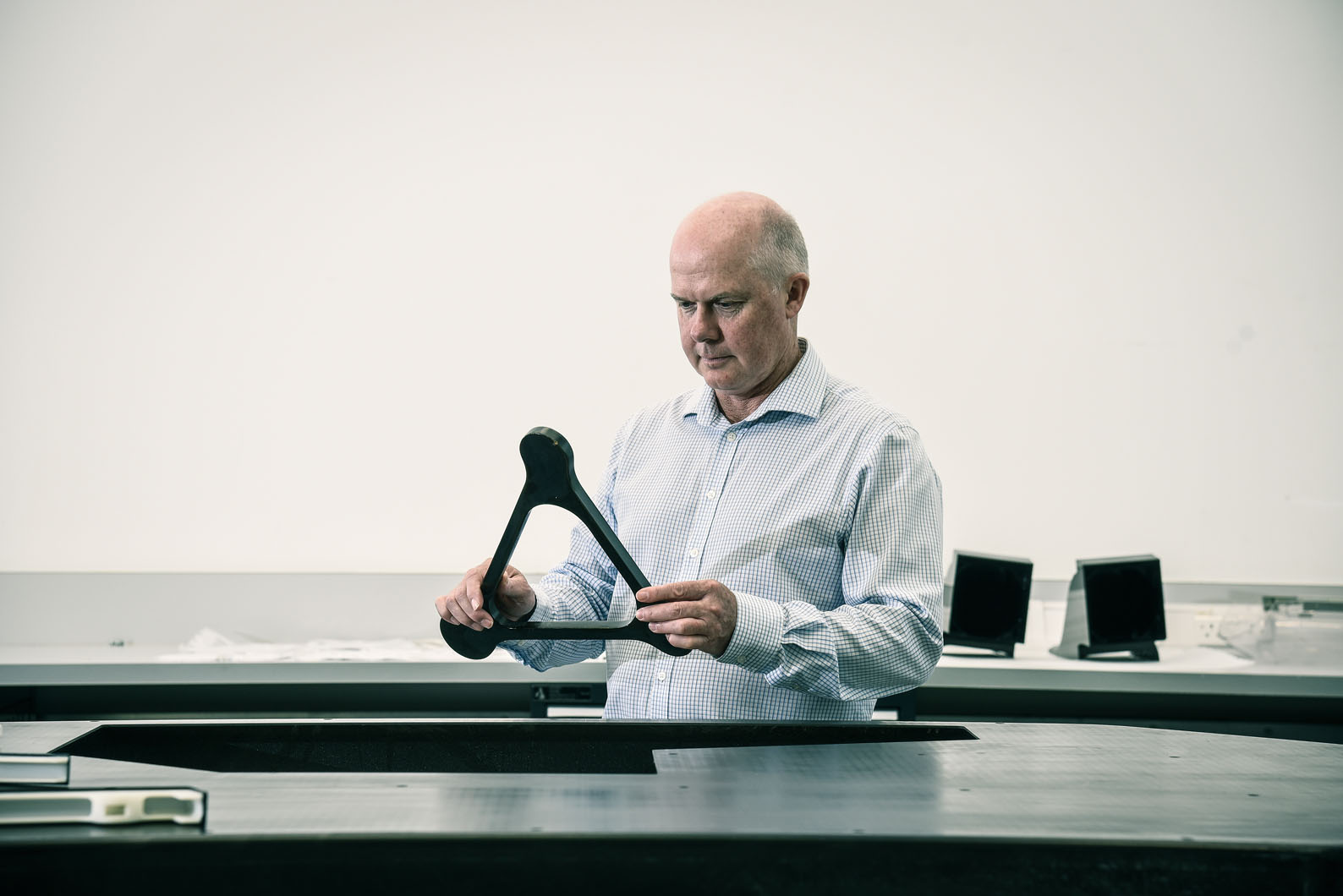Williams reveals electric vehicle skateboard chassis
New chassis offers exceptional functionality and scalability for makers of electric cars.
A new composite chassis concept, aimed at showing car makers an efficient way of changing from petrol to electric cars, is being launched today at the Cenex LCV show by Williams Advanced Engineering (WAE).
The new concept, dubbed FW-EVX, shows how car makers can create all-new plug-in hybrid or full-electric models without going through the comparatively inefficient stage of building electrified versions of conventional cars. FW-EVX is a highly optimised all-electric rolling chassis —in effect, a scalable and self-supporting ‘skateboard’. It uses a rigid and compact composite structure to carry electric motors (up to four), to mount traction batteries in a low and safe location, to manage airflows for both component cooling and aerodynamic efficiency and to provide mountings for new, Williams-designed carbonfibre suspension parts.

Other so-called skateboards have been proposed in the past, but none capable of handling so many competing car functions at once, or with such scalable versatility built in. The concept could work, Williams engineers claim, for both composite and aluminium construction.
According to Craig Wilson, WAE’s managing director, the FW-EVX concept can make an EV lighter, safer and greener than a conventional adapted design. Its space efficiency allows it to carry a bigger battery, for a longer range and better performance.

The whole system, subject to Williams patents, has been configured for maximum adaptability, allowing clients to fit it with a wide range of ‘top hat’ bodystyles. “We believe there’s a business with high potential here,” said Wilson.
In effect, FW-EVX consists of a rigid central platform with latest-spec crash structures mounted front and rear. It carries a long, wide but thin under-floor battery box in its centre. The box is enclosed by a pair of hollow, load-bearing composite members, forming sills at the edges. They collect air at the front of the car, direct it through alloy radiators mounted inside, and exhaust it rearwards in a way that can create downforce via an aerodynamic diffuser.
Two tech highlights in more detail
Flat-pack battery module:

Williams’ new concept chassis also showcases a rigid composite battery pack design, made by a process it calls ‘223’ because it starts in two dimensions as a sheet of material but eventually forms a skeletal, compact but extra-strong 3D component. FW-EVX’s central battery module — its outer carrier etched into components as a sheet, then folded and bonded into its final form — is strong enough to contribute to the rigidity of the total system and to protect it very effectively in a crash. Formed in carbonfibre, it’s also extremely light.
Recycled suspension parts:

Another FW-EVX refinement is a Williams-developed process to make light, strong suspension wishbones from recycled carbonfibre. The pressed parts can use 80 percent recycled material and weigh roughly 40 percent as much as conventional forged- alloy wishbones. They can also carry embedded wireless sensors, a facility increasingly important in racing. Williams Advanced Engineering boss Craig Wilson said components could be made in batches to suit mass production and “on the same cost level” as aluminium forgings.
RELATED ARTICLES
Horse Powertrain reveals hybrid conversion for electric cars
Engine-making joint venture of Geely and the Renault Group announces new hybrid powertrain that fits into the same space...
Aisin to produce hybrid motor for Mitsubishi in Thailand
The hybrid drive motor and gearbox, will be produced at Aisin Powertrain (Thailand) Co for use in the Mitsubishi XForce ...
GM reports strong Q1 sales in China, demand for EVs and hybrids surges 53%
General Motors and its joint ventures in China have sold more than 442,000 units between January and March 2025.






 07 Sep 2017
07 Sep 2017
 17293 Views
17293 Views
















 Autocar Professional Bureau
Autocar Professional Bureau




